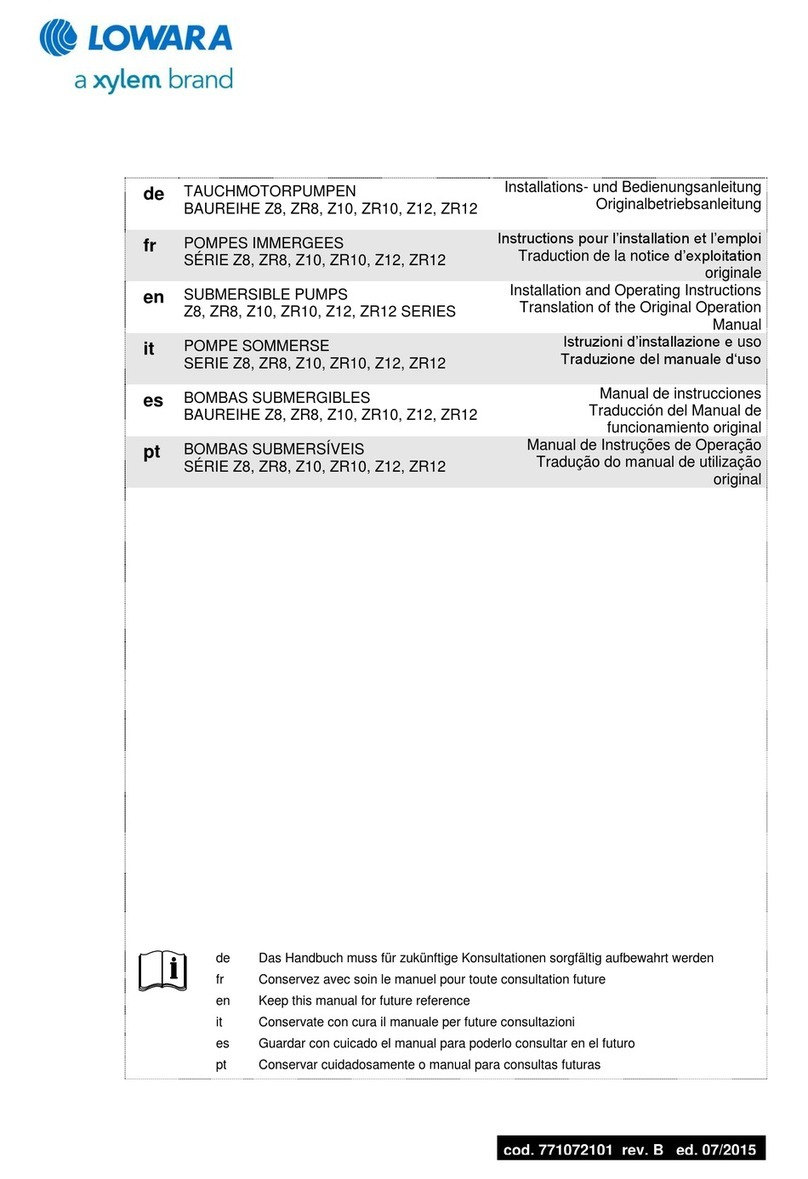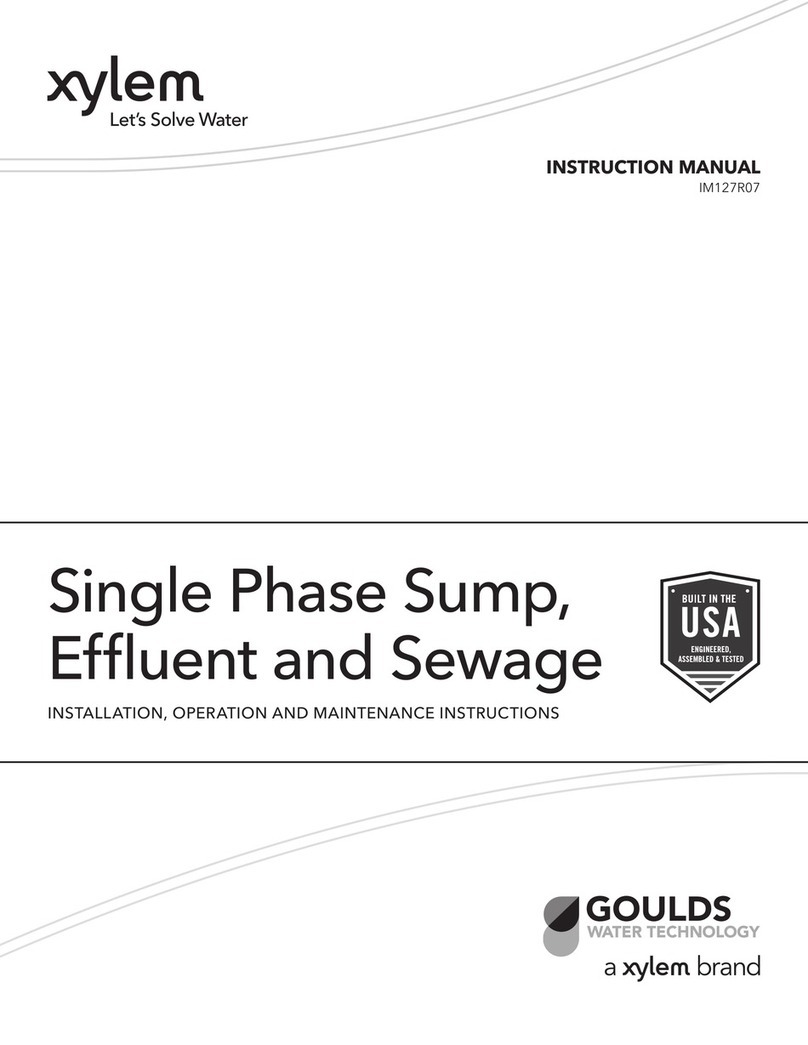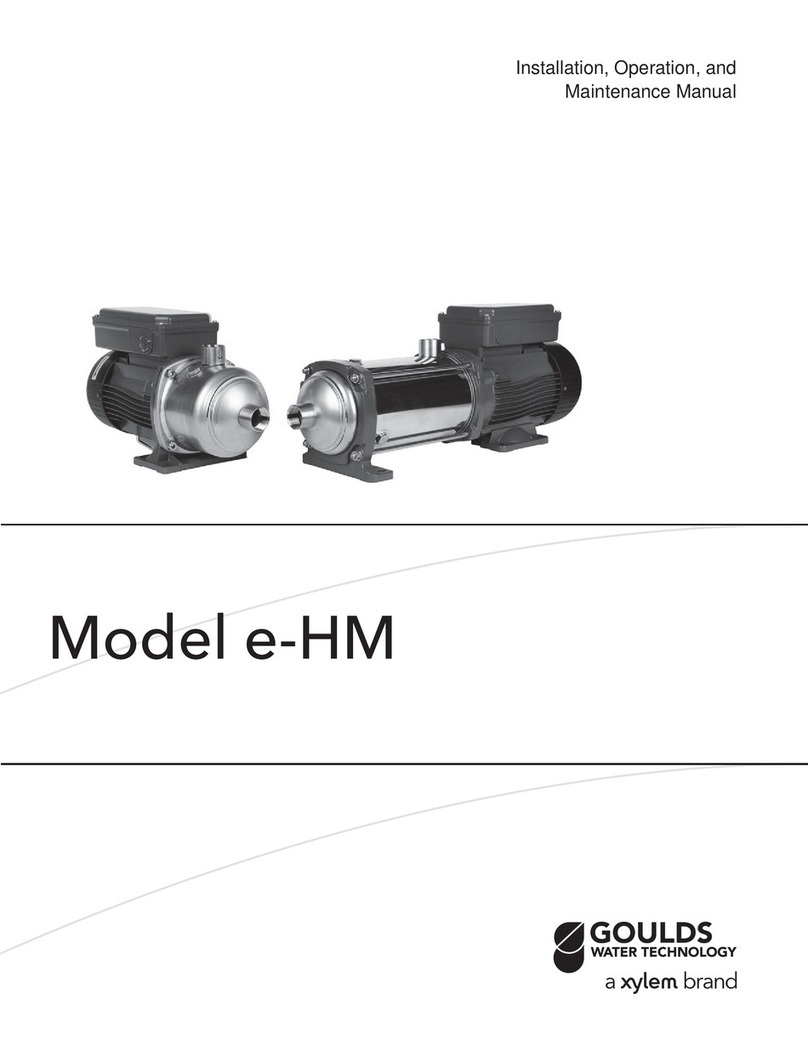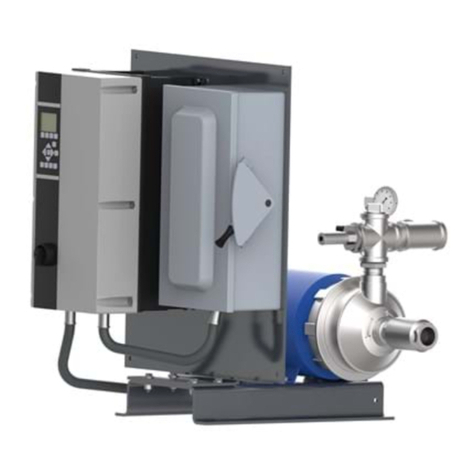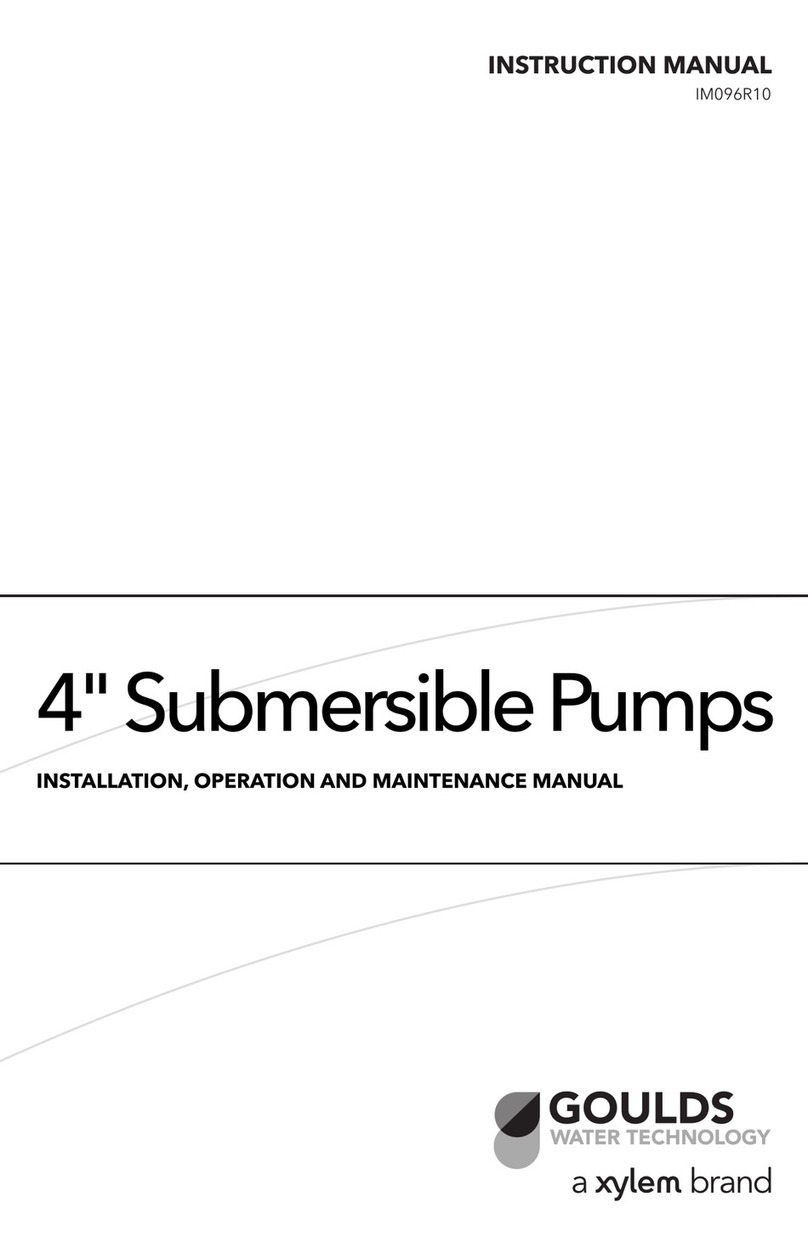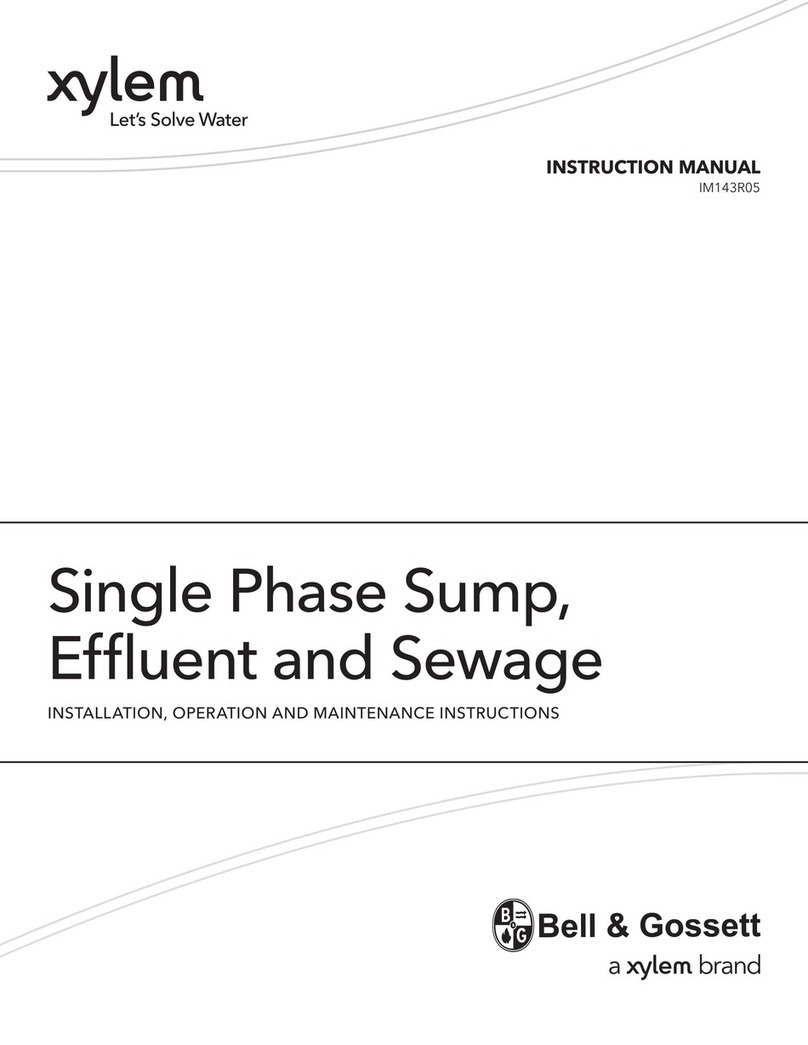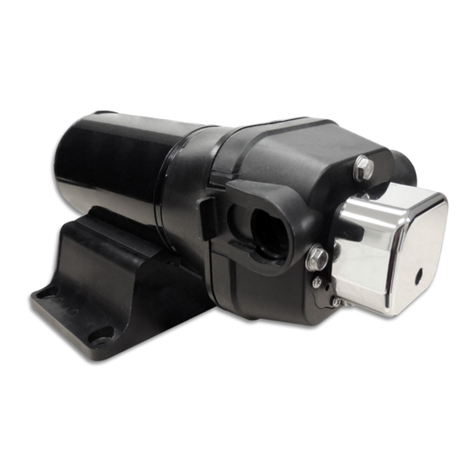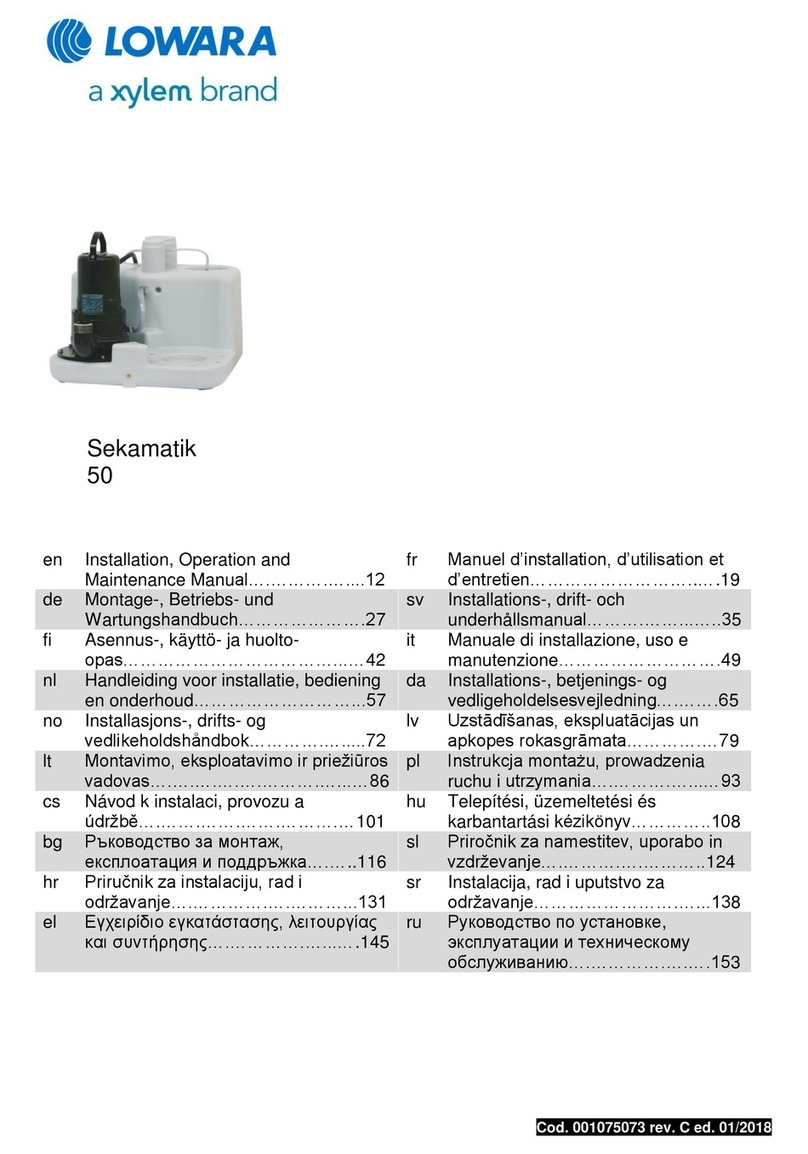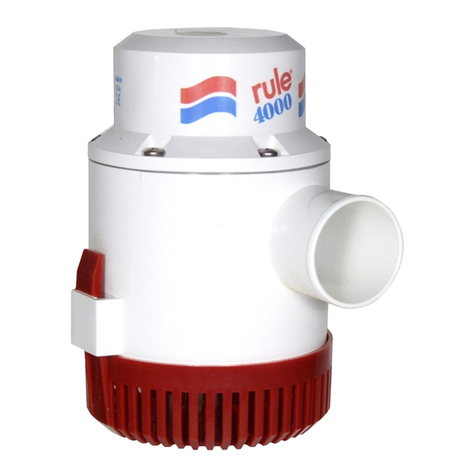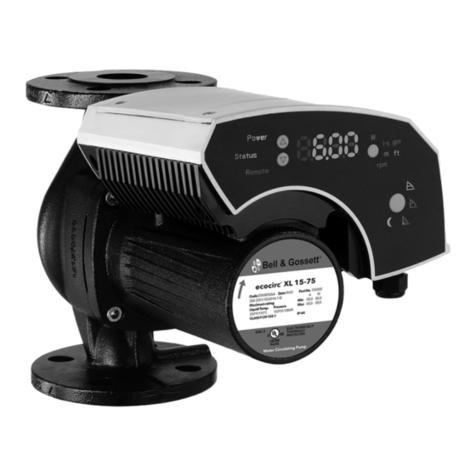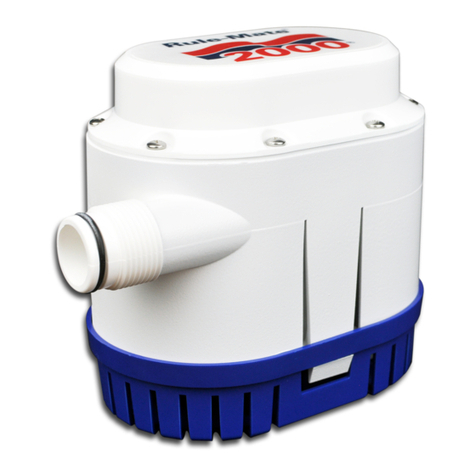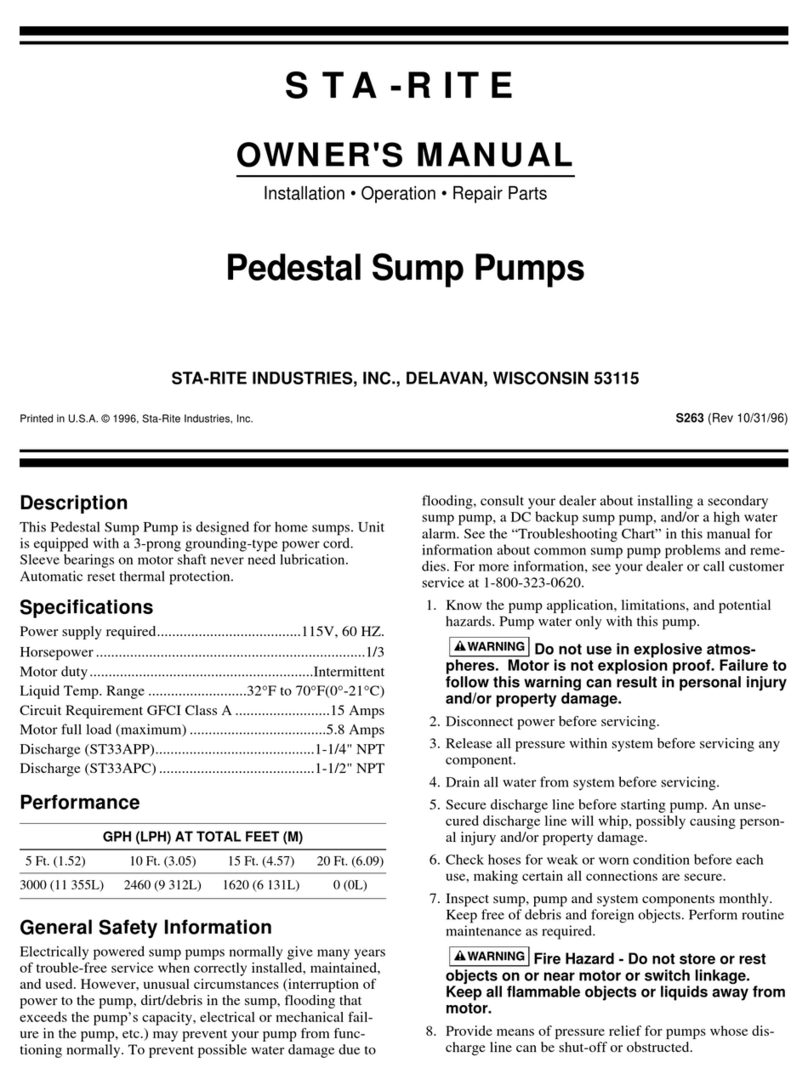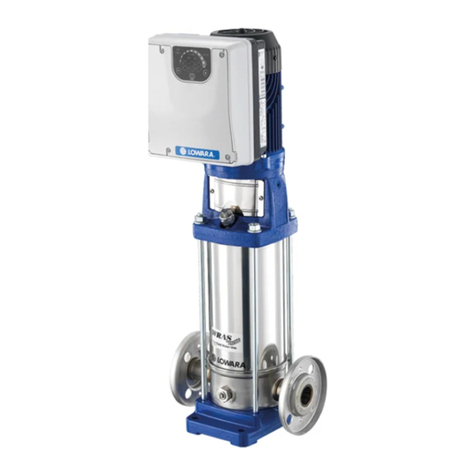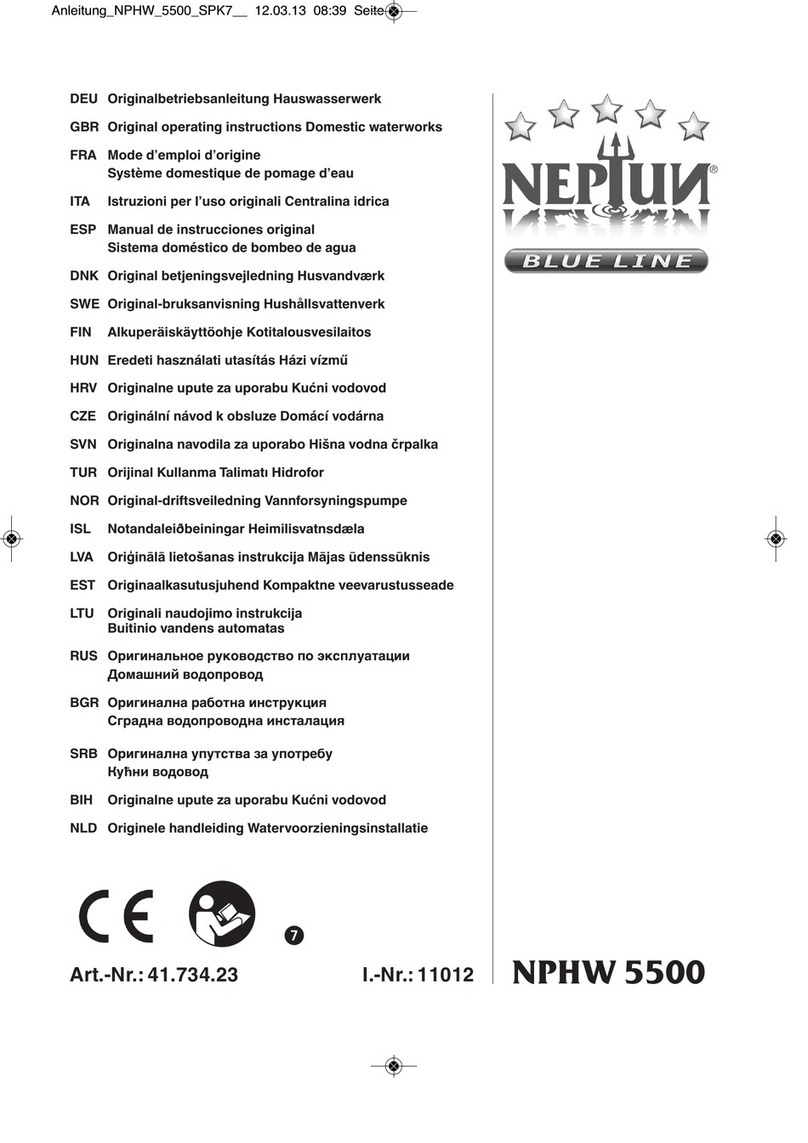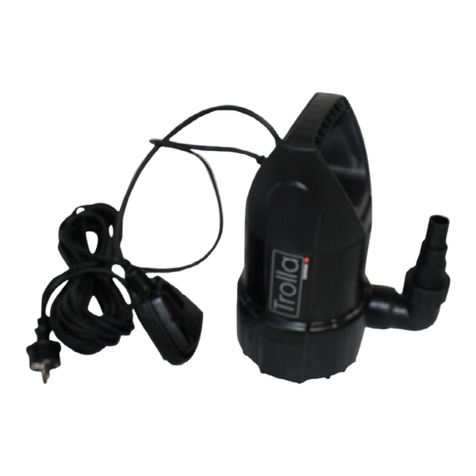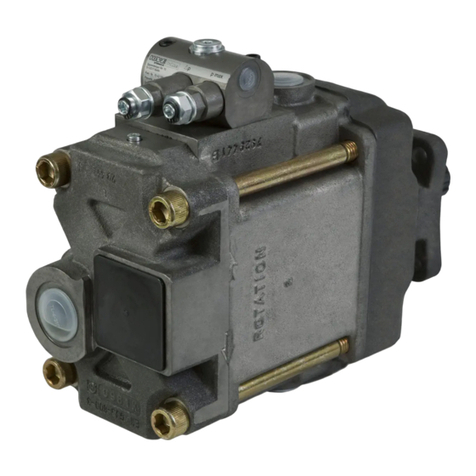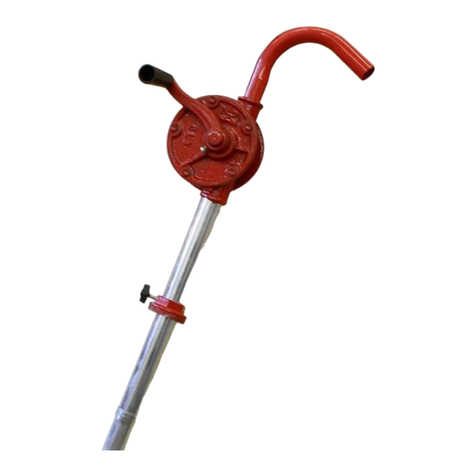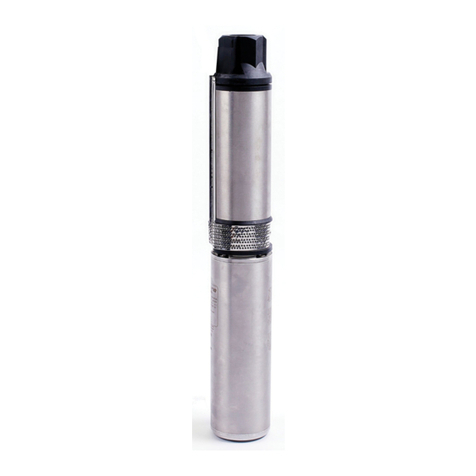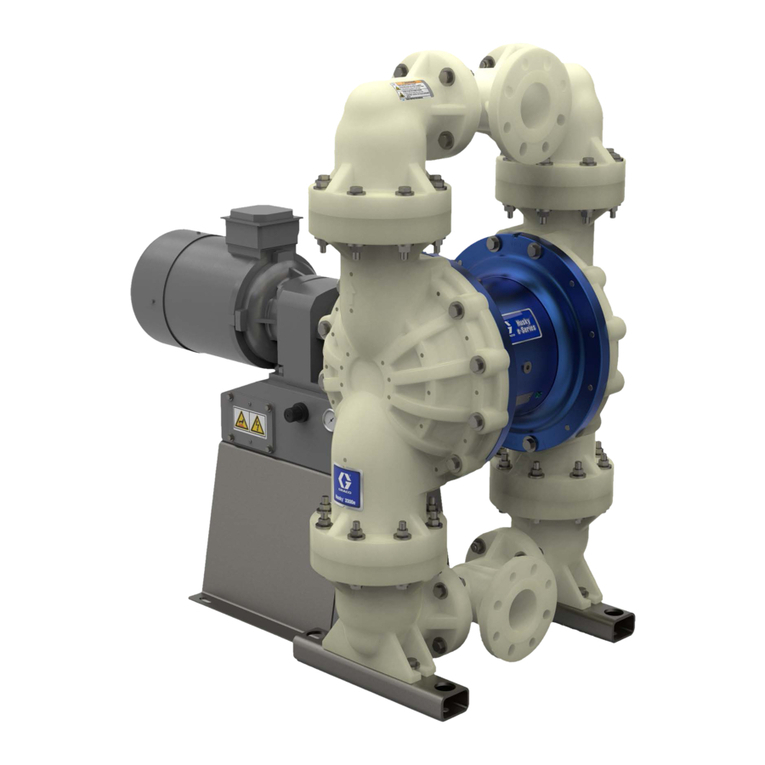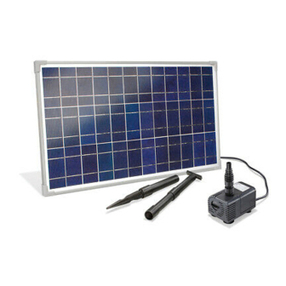
4
per ANSI B16.1, class 125 for standard anges as indi-
cated. Maximum working pressure for class 30 cast iron,
per ANSI B16.1, is 175 PSI.
Internal combustion engines are variable speed and vari-
able power machines. The power output depends on the
engine speed (RPM) and will be reduced when operat-
ing altitude, and/or the air temperature increases. When
driving the pump at the RPM required to deliver water
into the system piping, the engine must operate within
the Engine Manufacturers minimum and maximum RPM
limits. The power output to supply the pump power
demand must not exceed the continuous power rating
of the engine, after derating for all power consuming
engine accessories, and adjustmaner for installation site
altitude and air temperature.
DRIVE-TRAIN SIZING (BHP)
The BHP Equation is: (Flow x TDH) / 3960 x Eff.)
Note: For internal combustion units the BHP calculation
must be de-rated for the following conditions:
• 20% for continuous duty
• 5% for right-angle drive
• 3% for each 1,000 feet above sea level
• 1% for each 10º F above 60º F.
DRIVE-TRAIN SIZING (TORQUE)
Other than sizing an engine for BHP, torque calculations
also are required for proper sizing. Typically the horsepow-
er and torque rating do not follow the same relationship
throughout the usable range of a diesel engine (Figure 2).
The equation for torque (lbs/ft) is (5250 x BHP) / RPM.
Figure 2: HP (◆) vs. Torque (■)
VERIFY MATCH OF PUMP END TO ENGINE
SAE Bracket Size:
Engine drive pumps are available to t engines having a
standard SAE 5 through SAE 1 ywheel housing.
For a new engine, the engine supplier can provide the
SAE housing number.
For an existing engine, the ywheel housing bore and
bolt circle can be measured and compared against the
standard SAE housing dimensions listed in Table 1, to
identify the housing SAE number.
• Measure the ywheel housing bore (A), and the bolt
circle (B), as accurately as possible with a tape measure
(to the nearest 1/32 inch).
• Count the number of threaded holes in the ywheel
housing (C). Test the threaded holes with a bolt, to
determine the thread series.
• Compare the measured dimensions (A), (B), and (C)
against Table 1, to determine the SAE number of
the ywheel housing, to be sure it matches the SAE
number of your pump.
(1/4") Grout hole Base
Leveling wedges or shims—left in place
Top of foundation—
clean and wet down
Sleeve
Washer
Lug
(1/2 to 3/4")
Allowance
for leveling
Wood
frame
Grout
FRAME-MOUNTED UNITS
• A at substantial foundation surface MUST be provided
to avoid distortion and/or strain when tightening the
foundation bolts. A rubber mounting is acceptable to
reduce noise or excessive vibration.
• Tighten motor hold-down bolts BEFORE connecting
piping to pump.
Figure 1
• It is recommended that the baseplate be grouted to a
foundation with solid footing. Refer to Figure 1.
• Place unit in position on wedges located at four points,
two below approximate center of driver and two below
approximate center of pump. Adjust wedges to level
unit. Level or plumb suction and discharge connections.
• Make sure bedplate is not distorted and nal coupling
alignment can be made within the limits of movement
of motor and by shimming, if necessary.
• Tighten foundation bolts nger tight and build dam
around foundation. Pour grout under bedplate mak-
ing sure the areas under the pump and motor feet are
lled solid. Allow grout to harden 48 hours before fully
tightening foundation bolts.
• Tighten pump and motor hold-down bolts before
aligning shaft or connecting the piping to pump.
• Allow grout to harden for 48 hours before tightening 4
foundation bolts.
SAE – ENGINE DRIVEN PUMPS
The SAE engine drive bearing frame is designed to
bolt directly to the ywheel housing for engines with
an SAE no. 1, 2, 3, 4 or 5 mount. The pump shaft exten-
sion is sized for use with couplings bolted directly to the
ywheel. Goulds Water Systems optional couplings are
sized for 6½", 7½", 8", 10", and 14" ywheels. Although
other ywheel mount couplings may be used, it is recom-
mended that the Goulds Water Systems coupling be
used to ensure long and trouble-free operation from
your Goulds Pump.
REQUIREMENTS FOR PROPER OPERATION
Pump End:
When delivering the required capacity (GPM) to the
system piping, the pump must add the amount of Head
required by the system at the capacity. The operating
head-capacity point should be as close as possible to the
highest efciency line shown on the performance curve,
and must be below the head-capacity line labeled “maxi-
mum” RPM. The maximum operaton RPM for the pump is
determined by bearing life, or in some cases, by the pres-
sure limits of the pump. Suction and discharge openings
are NPT tapped for standard pipe, or faced and drilled
500
400
300
200
100
0
1500 1600 1700 1800 1900 2000 2100 2200 2300
RPM
178
176
174
172
170
168
166
164
162
160


